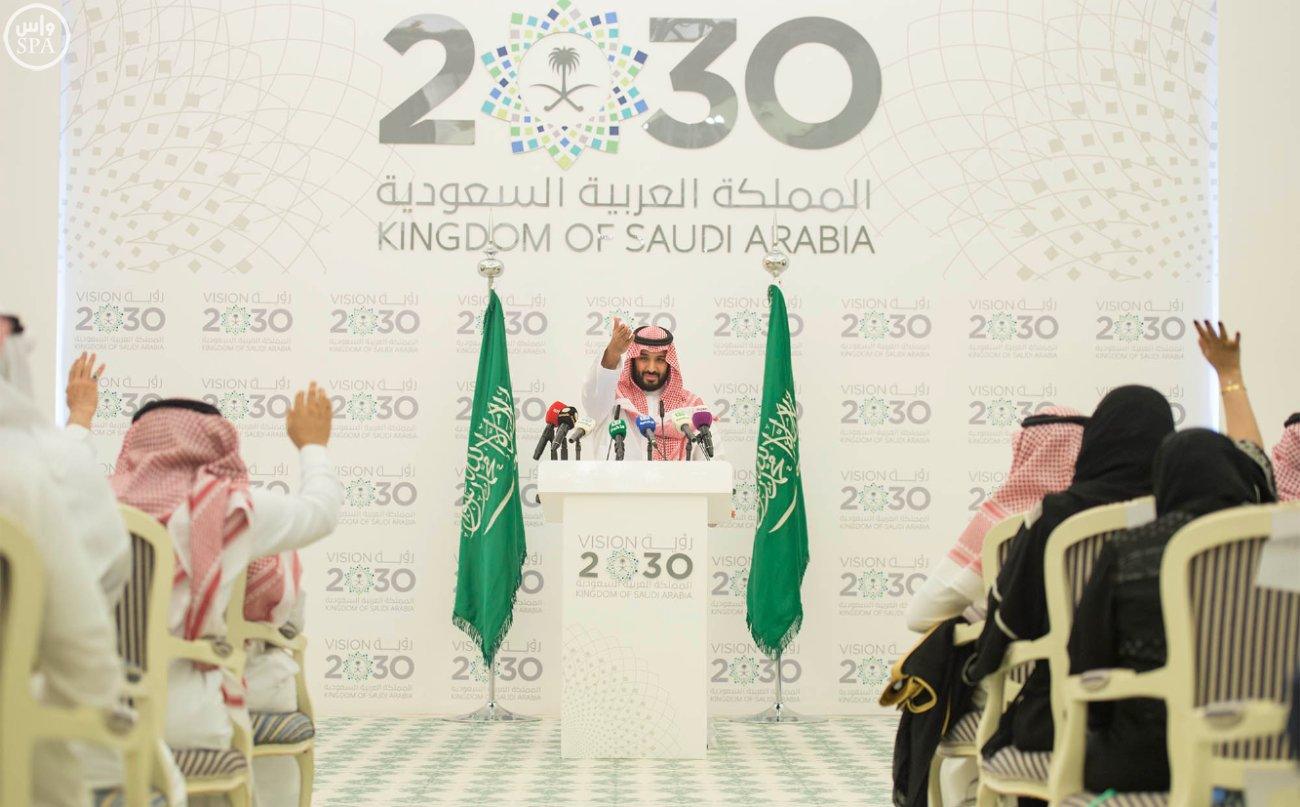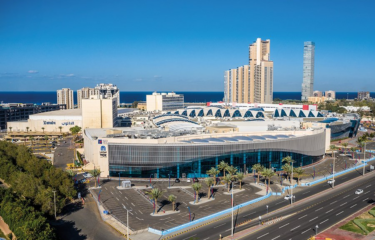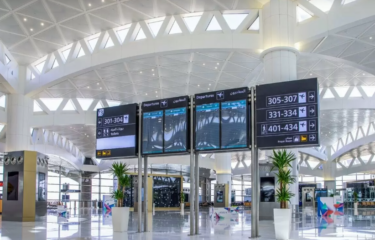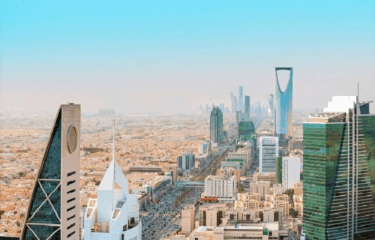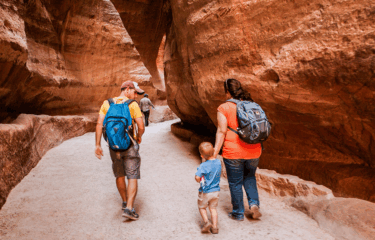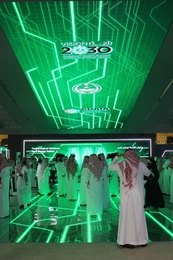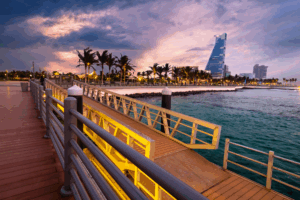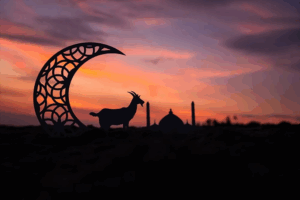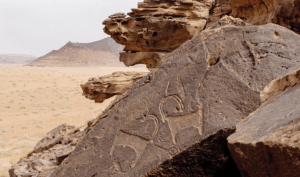Saudi Arabia has officially released the 2024 update on Vision 2030, and the results are remarkable. As the Kingdom moves into the final stretch of its transformation journey, the Saudi Vision 2030 completion rate has captured the spotlight. With 85 percent of initiatives completed or on track and 93 percent of key performance indicators achieved or nearing completion, the country has built a strong foundation for a future beyond oil.
Let’s walk through what the latest Saudi Vision 2030 report reveals about the nation’s progress, the milestones crossed, and what lies ahead.
Understanding the Overall Performance: How Saudi Arabia Scored in 2024
- 1,502 initiatives launched since 2016:
Saudi Arabia set an ambitious target early on, launching projects across every sector — from economic reforms to cultural renewal.
- 674 initiatives completed:
Nearly half the projects have already crossed the finish line, showing steady, tangible progress on the ground.
- 596 initiatives progressing on schedule:
Another large segment is right on track, reflecting careful planning and strong follow-through across ministries.
- 85 percent overall success rate for initiatives:
With so many projects either done or moving forward without delay, Vision 2030’s momentum feels stronger than ever.
- 374 key performance indicators monitored in 2024:
Every major goal under Vision 2030 is tracked carefully, ensuring results aren’t just claimed but proven.
- 299 KPIs fully achieved:
Most of these targets were not only met but delivered with consistency across economic, social, and governance sectors.
- 257 KPIs exceeded their original targets:
Many initiatives didn’t just meet the bar — they raised it, delivering outcomes better than initially promised.
- 49 KPIs achieved between 85% to 99% of their targets:
Even the goals that haven’t hit 100 percent are within close reach, reflecting strong momentum across the board.
The Strategy Behind the Saudi Vision 2030 Success
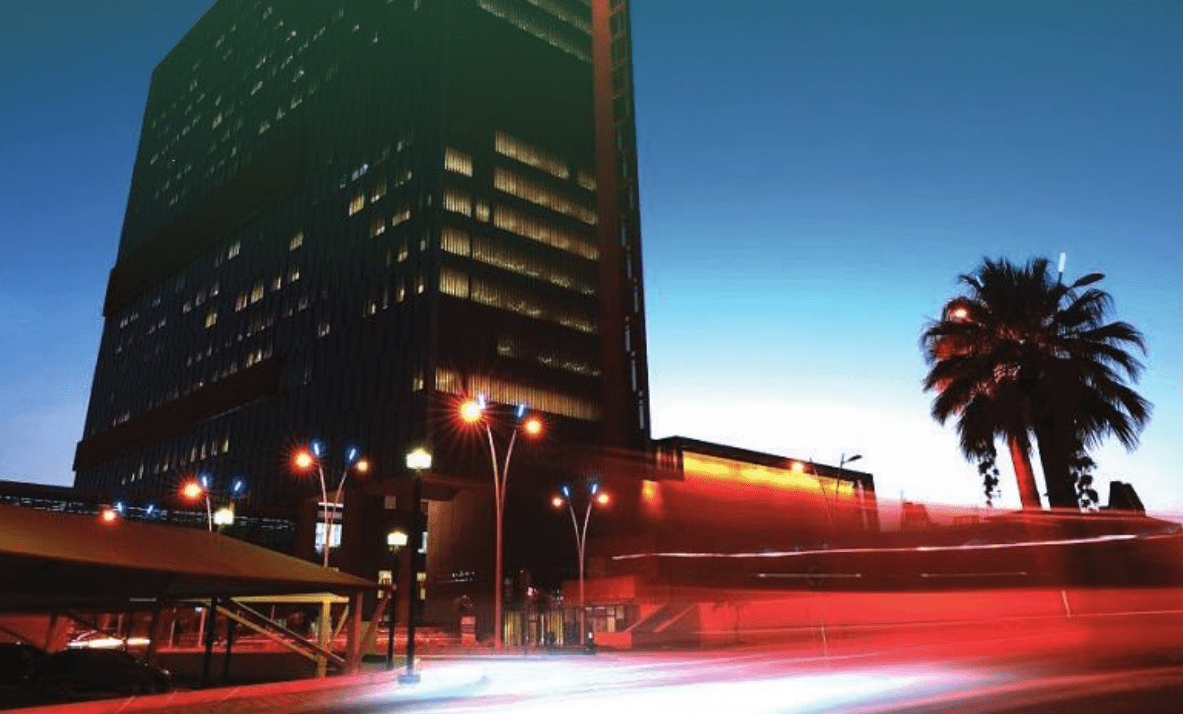
Vision 2030 has unfolded across three planned phases. The first phase (2016-2020) built the reform foundation, while the current phase (2021-2025) focuses on scaling those efforts. The final phase (2026-2030) will be about completing the journey.
This thoughtful structure helped Saudi Arabia maintain flexibility, absorb lessons, and adapt its initiatives to evolving realities. The high Saudi Vision 2030 completion rate shows that this phased model has worked in the Kingdom’s favor.
Economic Diversification: Beyond Oil, Toward a Thriving Economy
- Private sector contribution to GDP climbed to 47 percent:
Beating the target set for 2024, this shows how much private enterprise now fuels the Kingdom’s economy.
- Real non-oil GDP grew by 3.9 percent:
Growth outside of oil isn’t just an idea anymore. It’s happening across industries like tourism, mining, logistics, and technology.
- Inflation stayed low at 1.7 percent:
While many global economies wrestled with rising prices, Saudi Arabia managed to keep inflation among the lowest in the G20.
- 1,865 new investment opportunities created:
Well beyond the expected number, this surge in opportunities shows that Vision 2030 reforms are building real confidence among investors.
- SR77.6 billion in foreign direct investment inflows:
Capital is flowing into the country at a healthy pace, as international partners see Saudi Arabia as a market of growing promise.
- Public Investment Fund assets surged to SAR3.53 trillion:
With a 390 percent growth since 2016, the PIF stands as one of the biggest engines driving Saudi Arabia’s economic transformation.
Labor Market and Employment
Job creation has been another major success story. Unemployment among Saudi citizens dropped to 7 percent, meeting the Vision 2030 target six years ahead of schedule.
In 2024 alone, 437,000 Saudi men and women found jobs in the private sector, pushing the total number of Saudi private-sector employees to 2.4 million. This growth reflects not just more jobs but better alignment between education systems and real market needs.
Women’s participation has soared. Female labor force participation hit 33.5 percent, surpassing the 30 percent target. Saudi women now occupy 43.8 percent of middle and senior management roles, a transformation few would have predicted a decade ago.
Quality of Life and Social Development
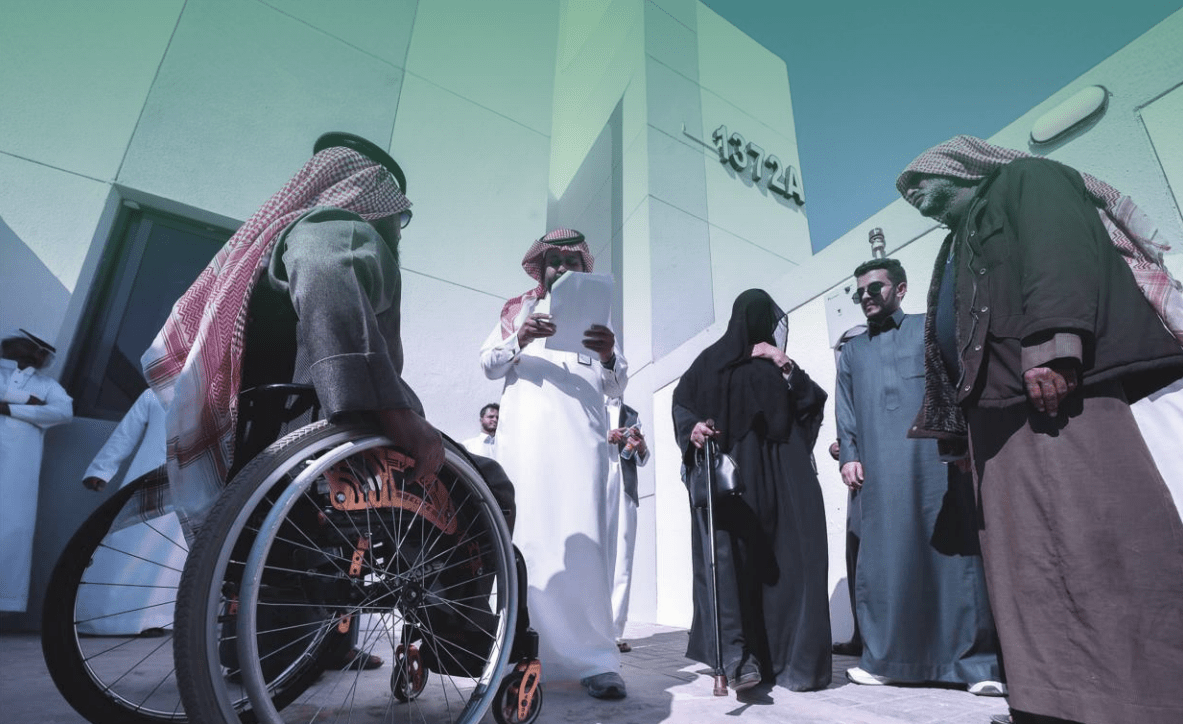
The Saudi Vision 2030 progress report also shows improvements in social and environmental areas.
Homeownership rates rose to 65.4 percent, exceeding the target for 2024. Programs supporting affordable housing and easier mortgage access have made a real difference for Saudi families.
Environmental initiatives have gathered pace, too. More than 115 million trees were planted as part of the Kingdom’s ambitious plans to restore landscapes and combat desertification. Rehabilitation efforts brought 188,000 hectares of degraded land back to life.
The spirit of volunteerism has flourished, with over 1.2 million Saudis actively participating in national initiatives, surpassing the 2030 goal well ahead of time.
Tourism and Culture: Reimagining Saudi Arabia’s Global Identity
Tourism has surged beyond expectations. Saudi Arabia welcomed 16.92 million foreign Umrah pilgrims in 2024, a record number that beat the target by a wide margin.
The Kingdom also achieved its goal of attracting 100 million visitors per year — six years earlier than planned. This success came from improvements in visa policies, airport expansions, hospitality training, and marketing campaigns that positioned Saudi Arabia as a global tourism destination.
Cultural achievements have also taken center stage. Saudi Arabia now boasts eight UNESCO World Heritage Sites, showcasing its commitment to preserving and promoting its cultural richness.
Digital Transformation
Saudi Arabia made huge gains in digital transformation, climbing to 6th place globally in the UN E-Government Development Index. Since 2016, the Kingdom has jumped 25 positions, a sign of serious dedication to digital excellence.
Government services are more accessible, business processes are faster, and new opportunities are opening up in tech sectors. These steps are laying the groundwork for a more connected, efficient society.
Governance and Monitoring
Vision 2030’s success is underpinned by a rigorous performance monitoring system. Every initiative falls under one of ten Vision Realization Programs (VRPs), focused on priority areas like health, tourism, financial services, and digital government.
Clear criteria for success, regular reviews, and a culture of accountability have ensured that Vision 2030 remains a living, evolving roadmap — not just a static plan. These frameworks have kept the Kingdom’s focus sharp and its execution strong.
Saudi Arabia’s Path to 2030 and Beyond
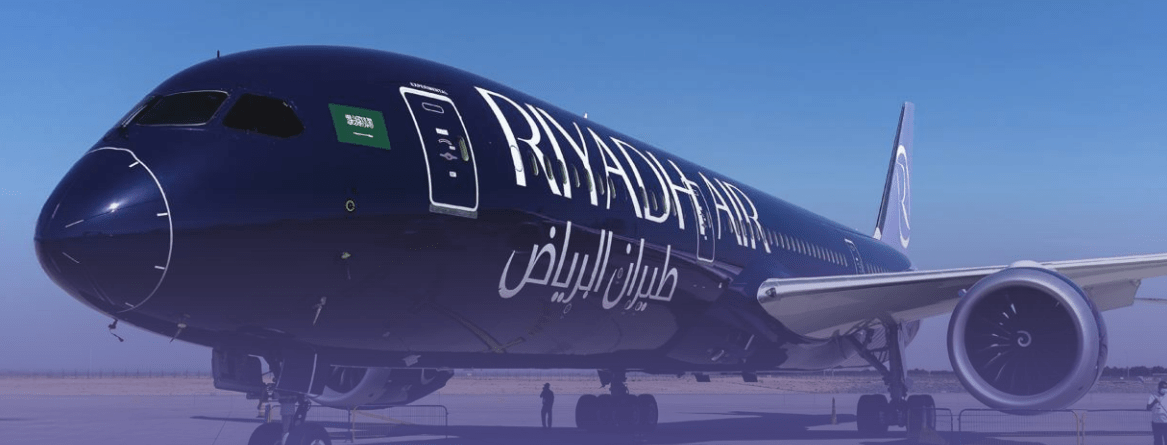
With so much already achieved, Saudi Arabia is entering the final phase of Vision 2030 from a position of strength. Yet, challenges remain.
Sustaining economic diversification efforts, deepening private sector growth, and nurturing a knowledge-driven economy will require continued focus. As the Kingdom sets its sights higher, it can build on the momentum created by the high Saudi Vision 2030 completion rate.
Hosting the 2034 FIFA World Cup presents a new opportunity to extend Vision 2030’s legacy, through infrastructure upgrades, hospitality growth, and greater global integration.
Saudi Arabia’s Vision 2030 success update tells a story of determination, flexibility, and ambition. As the final milestones approach, the Kingdom stands as a global example of what bold planning, relentless execution, and unified national effort can achieve.
A Nation Transforming, A Future Unfolding Under a Visionary Leader
The 2024 Saudi Vision 2030 progress report tells a story of transformation built on ambition, action, and unity.
With 85 percent of initiatives completed or moving steadily forward, and 93 percent of performance indicators achieved or close to it, the Saudi Vision 2030 completion rate reflects how far the Kingdom has advanced toward its bold future.
King Salman bin Abdulaziz captured this spirit, saying,
“We thank God for the achievements our country has made in less than a decade, making it a global model for transformation at all levels. While we are proud of the contributions of our nation’s people who have dedicated their efforts to moving it toward progress and prosperity, we will continue together on the path of construction to achieve more sustainable development for future generations.”
At the heart of this journey stands Crown Prince Mohammed bin Salman.
As the architect of Vision 2030, his leadership and vision have reshaped Saudi Arabia’s path. He reflected,
“As we enter the ninth year of the Kingdom’s Vision 2030, we are proud of the achievements of our nation’s sons and daughters. They have proven that challenges do not stand in the way of their ambitions. We have achieved our targets and exceeded some of them. We will continue to move steadily toward our 2030 goals. We renew our resolve to redouble our efforts and accelerate the pace of implementation, to invest in every opportunity and strengthen the Kingdom’s position as a leading country on the global level.”
As Saudi Arabia moves into the final phase of Vision 2030, it carries a foundation shaped by care, vision, and belief.
The achievements so far are proof that ambition, when matched with action, can reshape history.
FAQs
What is the Saudi Vision 2030 completion rate for 2024?
As of 2024, Saudi Arabia has completed or is on track with 85 percent of its Vision 2030 initiatives, with 93 percent of key performance indicators either fully achieved or nearing completion.
How many Saudi Vision 2030 initiatives have been completed?
By 2024, Saudi Arabia completed 674 out of 1,502 total initiatives, with an additional 596 initiatives progressing on schedule.
What are the major achievements highlighted in the 2024 Saudi Vision 2030 report?
Key achievements include surpassing private sector GDP targets, reducing unemployment to 7 percent, expanding women’s workforce participation, and exceeding tourism goals.
How has Saudi Arabia’s economy changed under Vision 2030?
Saudi Arabia’s economy has diversified significantly, with private sector contribution to GDP rising to 47 percent and real non-oil GDP growing by 3.9 percent in 2024.
What sectors show the most progress in the Saudi Vision 2030 update?
Significant progress is reported in economic diversification, digital transformation, labor market reforms, environmental sustainability, tourism, and cultural heritage development.

